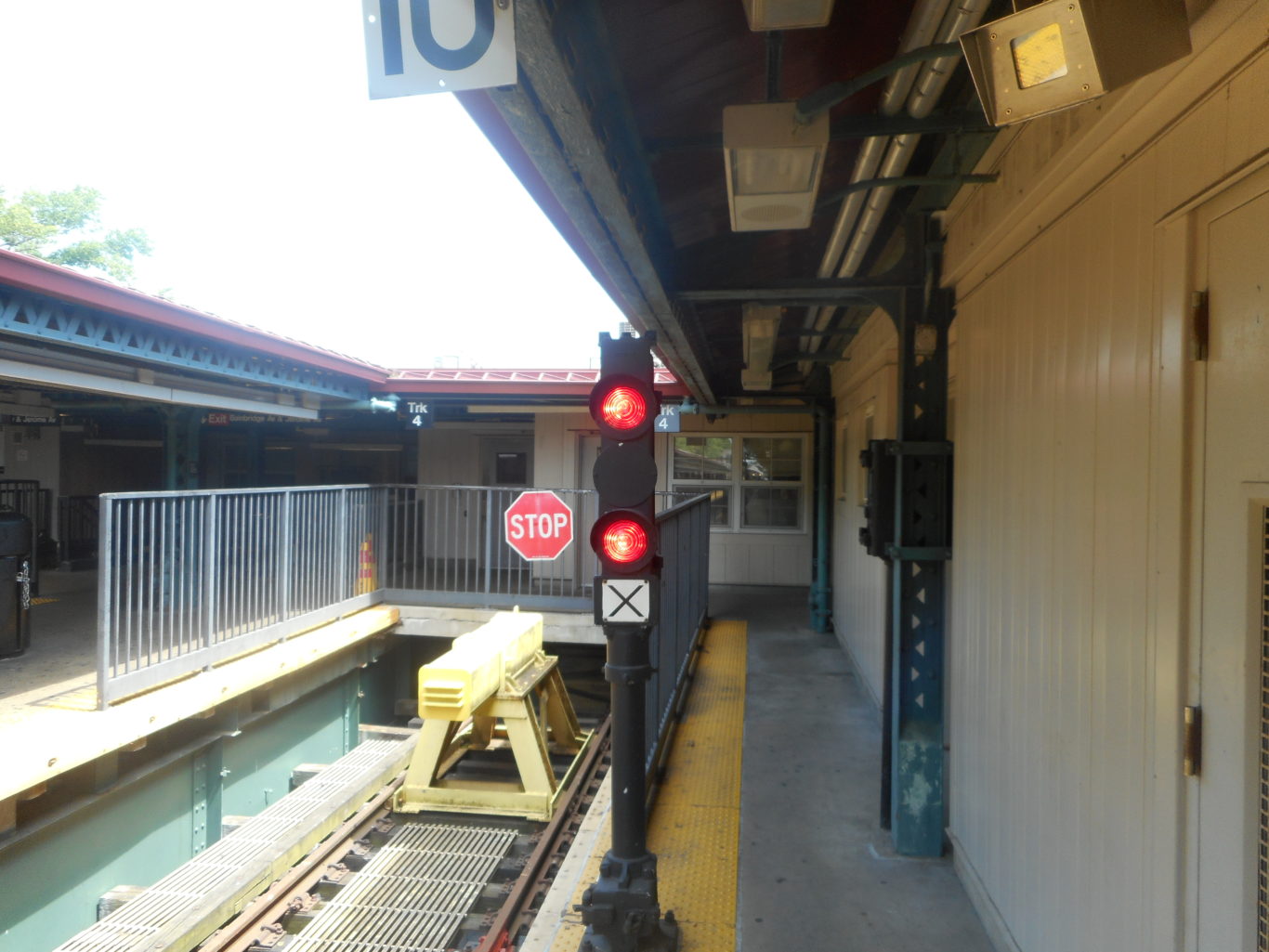
A 2013 MTA study determined that replacing the subways’ century-old signaling system was the authority’s top priority. DanTD/Creative Commons
The MTA appeared to do an about-face on its plans for subway upgrades this morning, as its managing director, Veronique Hakim, questioned the wisdom of going full speed ahead on replacing the aging and antiquated signaling system with a communications-based train control (CBTC) system, during a City Council oversight hearing on MTA operations.
CBTC, which uses transponders, RFID chips, and other modern communications technology to manage the system through a computerized central control, has already been installed on the L line and is currently being implemented on the 7 to allow trains to run closer together and reduce signal-related delays. It also provides a number of other benefits over New York’s current signal system, such as improved safety, a dramatic reduction in maintenance costs, and more efficient energy usage, according to a 2014 Regional Plan Association report.
In 2013, the MTA’s own twenty-year capital needs assessment report considered upgrading the system’s aging and inferior signaling system to CBTC as the agency’s top priority.
But at today’s hearing of the council transportation committee, Hakim appeared to walk that back. “Necessarily replacing the entirety of the New York City transit subway system with what we know today of communications-based train control, that may not be the right thing to do,” Hakim said. Instead, she argued that the MTA should explore “emerging technologies” that could help minimize costs and result in smoother and speedier implementation. Hakim added the MTA is working with the “industry to bring us new ideas to be able to do things differently,” although she did not provide any potential examples of what such a technology might be.
The MTA’s slow rollout of CBTC has already been a point of contention among transit advocates and experts. Replacing the subway’s century-old signaling system on the L took a decade and ran over budget; the 7 line’s slated CBTC completion date almost certainly won’t be met. The MTA currently has $952 million budgeted for the implementation along the Queens Boulevard, Eighth Avenue, and Culver lines in the current 2015–2019 capital program — although $400 million toward signal upgrades was shaved off by the state before approving the plan. The New York Times reported that at its current pace, it will take the MTA fifty years and $20 billion to implement CBTC across the entire network.
Hakim’s remarks are not anti-modernization per se, according to Rich Barone, vice president for transportation at the Regional Plan Association and the main author of the report on the MTA’s signals. Hakim indicated that the goal of exploring other technologies would be a faster and more efficient implementation of a new signaling system, which Barone agrees would be all well and good.
Still, Barone is concerned that using a new and unproven technology will have the opposite effect and will actually slow things down while increasing costs. One reason CBTC implementation has been slow and costly in New York — as opposed to other century-old systems like Paris and London, which have already converted roughly half their systems to CBTC at a fraction of the cost — is because the MTA insisted on building its own version of CBTC that uses radio frequencies instead of fiber optics (ostensibly, Barone said, so people couldn’t steal the wires). To do this, the MTA spent years and billions of dollars testing a radio-based system that wasn’t used anywhere else in the world and needed to pass extensive safety checks before implementation.
Now, the MTA is once again exploring the possibility of replacing one new proprietary system it developed but only implemented on two lines with another new proprietary system, which would have to go through similar safety checks and rigorous testing. Deciding to use a whole new signaling system at this stage would not only carry the risks of the unknown Barone mentions, but also throw out the institutional knowledge the MTA has developed for how to implement radio-based CBTC on its own lines. This kind of institutional knowledge, according to the Times, was one of the key reasons London’s Underground was able to speed up CBTC implementation as it went along.
City Councilmember Brad Lander, who tweeted earlier today that he found Hakim’s testimony “pretty disturbing,” tells the Voice that upgrading signals remains the MTA’s top priority, according to the authority’s own needs assessment. “She didn’t deny that, but she also showed absolutely no urgency of doing anything about it,” says Lander. “The plan they put forward does not accelerate that by one day, and there’s no evidence that they’re working on investing in the most critical piece of the system.”
With the MTA in an official “state of emergency” declared by Governor Andrew Cuomo in the wake of constant delays and breakdowns, Barone asks, “Do we really have time to start from scratch?”
An MTA spokesperson has promised to respond to the Voice’s questions on whether Hakim’s statements represent backtracking on CBTC implementation. This post will be updated once we receive a reply.
UPDATE: An MTA spokesperson has responded: “The entire premise of this story is off base. As Managing Director Hakim said at the hearing today, the MTA is seeking ways to implement advanced signal technology more quickly and cheaply — for example by using wireless technology — in order to bring better service to our customers…wait for it…more quickly and cheaply.”